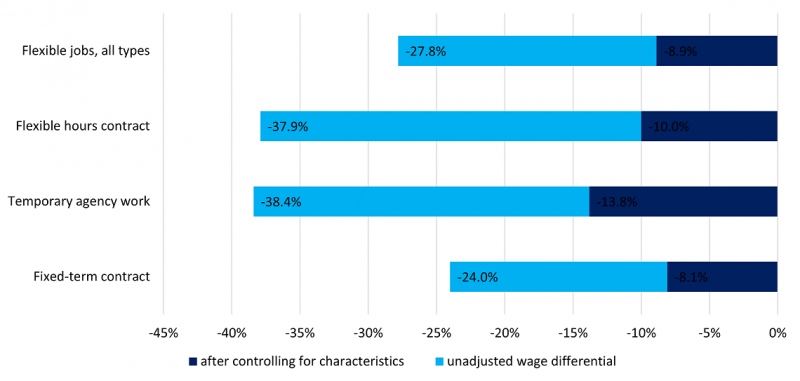References
Albanese, A., & Gallo, G. (2020). Buy flexible, pay more: The role of temporary contracts on wage inequality. Labour Economics, 64, 101814.
De Graaf-Zijl, M. (2005). Compensation of On-call and Fixed-term Employment: The Role of Uncertainty (Tinbergen Institute Discussion Paper No. 05-120/3). Tinbergen Institute.
Dekker, R. (2007). Non-standard employment and mobility in the Dutch, German and British labour market (Doctoral Thesis). Ridderprint.
Picchio, M. (2006). Wage differentials between temporary and permanent workers in Italy (Quaderni di Ricerca No. 257). Marche Polytechnic University.
Rosen, S. (1986). The theory of equalizing differences. In O. Ashenfelter & R. Layard (Eds.), Handbook of Labor Economics. Elsevier.
Smits, W., & Skriabikova, O. (2019). Beloning van flexwerkers: De invloed van opleiding, beroep en bedrijf. Tijdschrift voor Arbeidsvraagstukken, 35 (1), 26–37.
Sullivan, P., & To, T. (2020). When are Wage Differentials Compensating? [Unpublished manuscript, from http://www-personal.umich.edu/ paulsull/comp-diff.pdf].
van der Wiel, K. (2010). Better protected, better paid: Evidence on how employment protection affects wages. Labour Economics, 17 (1), 16–26.





